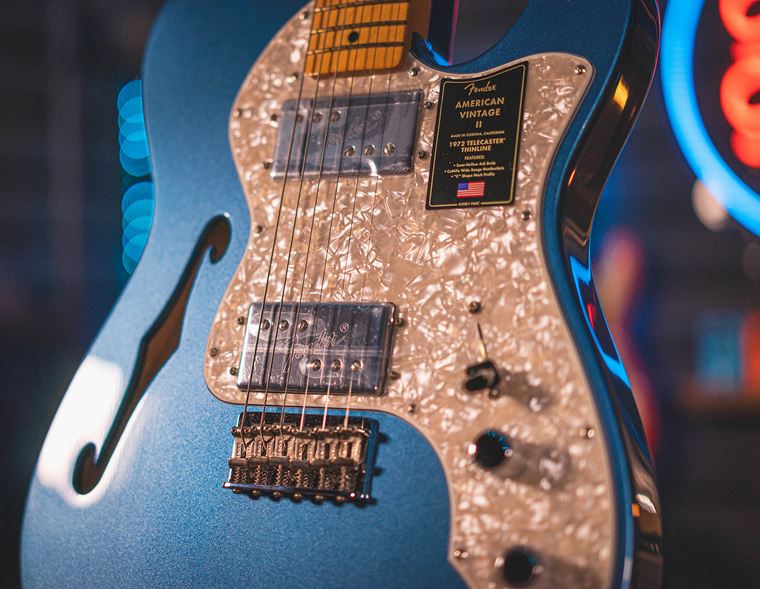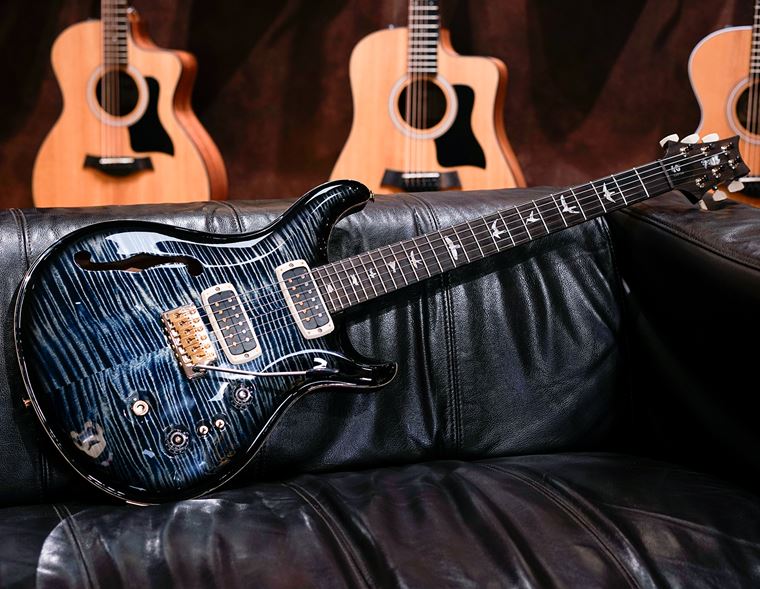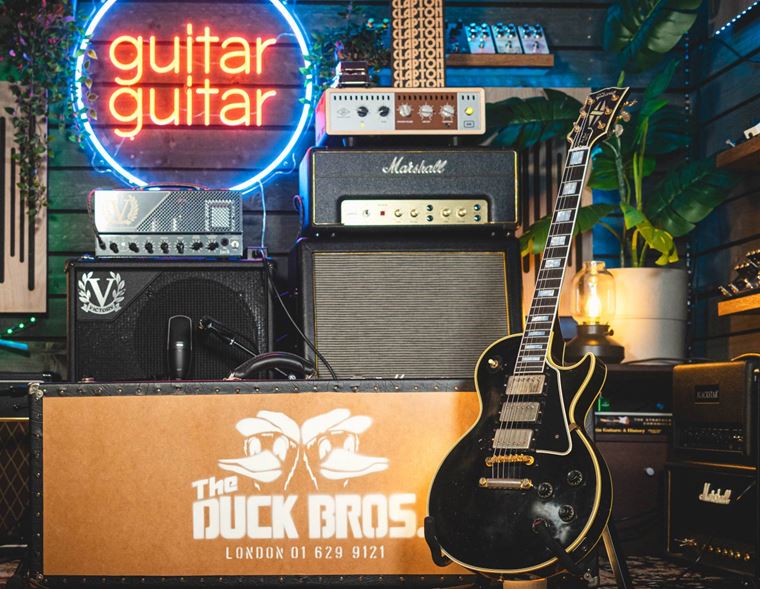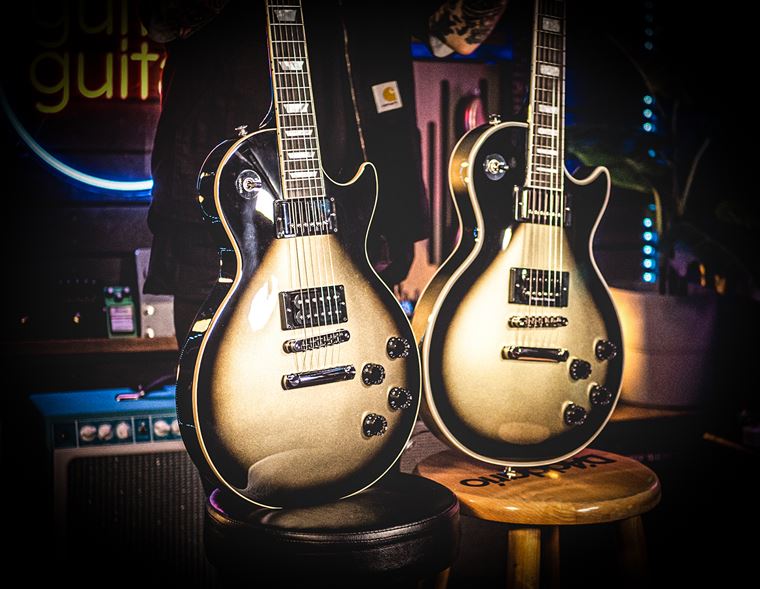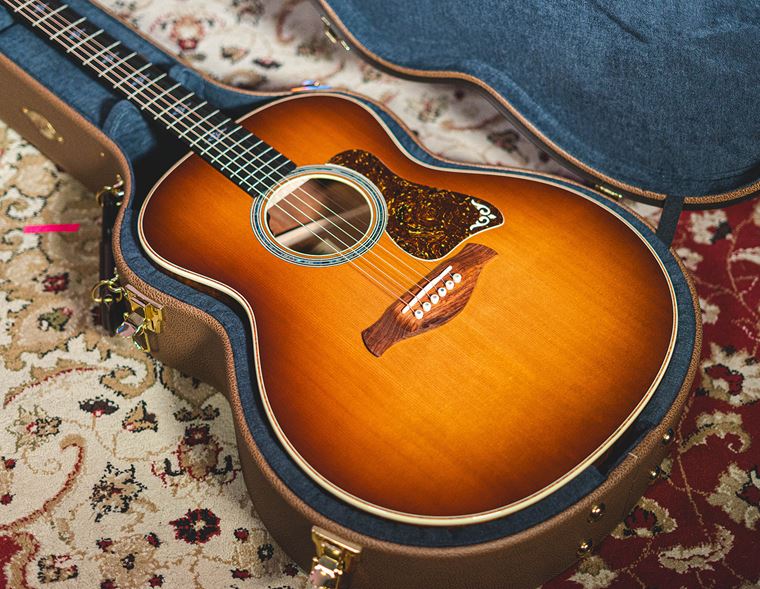Fender Jazzmaster vs Jaguar vs Mustang: Battle of the Offsets
Which Fender offset do you like the best? Fender’s Jazzmaster, Jaguar and Mustang guitars are more widely-used than ever before, to the extent that you’re as likely to see a Jazzmaster on stage today as you would a Stratocaster or Telecaster. That’s not how things once were for sure, and today’s blog will look into how that has occurred, as well as putting these alternative titans against each other in a bid to find which is greatest!
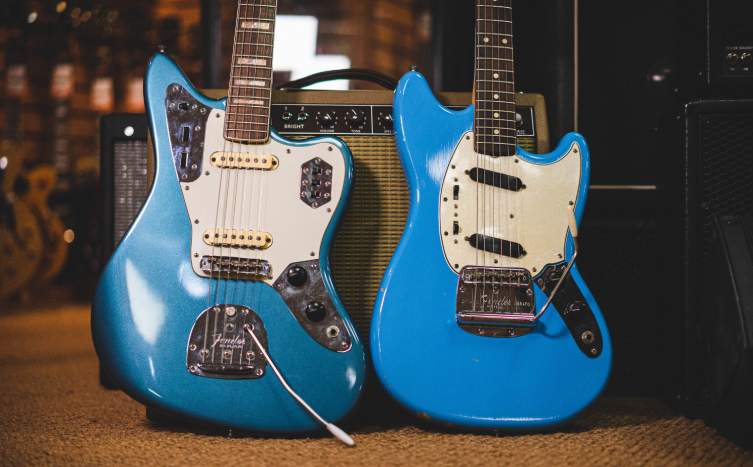
Well, not really. I don’t think it’s very useful to rank any of these models as ‘better’ than the others, since they are all actually quite unique. Instead, I’ll outline what makes them different, and how that might prove useful to you as a player.
Contents
- What is an Offset Guitar?
- The Fender Jazzmaster - Some Background
- The Fender Jaguar
- The Fender Mustang
- Which Offset Model is the Best?
What is an Offset Guitar?
An ‘offset’ is the nickname applied to the guitars we are looking at today. The Fender Jazzmaster, Jaguar and Mustang all have body shapes that use an offset waist: if you look at a picture, the narrowest parts of the body are not symmetrical in the way that a Telecaster or Stratocaster are.
These guitars were released slightly later in Fender’s history than the Strat and Tele. We’ll look at each in turn below, but put simply, the Jazzmaster & Jaguar were luxury models, whereas the Mustang was a beginners/student’s model. These terms hardly mean anything these days because the market is so different. People like these guitars because of many other reasons, and we’ll look at those reasons today.
The Fender Jazzmaster - Some Background
Let’s take the Jazzmaster first, since it seems to be the most popular of the trio. The Jazzmaster is an offset electric with a unique ‘twin’ or double circuit that allows two separate and adjustable ‘rhythm’ and ‘lead’ sounds to exist. It shares a unique bridge and tremolo design with the Jaguar, which is hardly ever seen on guitars outside of these particular styles.
The Jazzmaster has a standard 25.5” scale length neck and two unique single coil pickups that are significantly larger than those found on Strats or Teles. These pickups offer a larger and warmer sound thanks to the bigger magnet and longer coil windings.
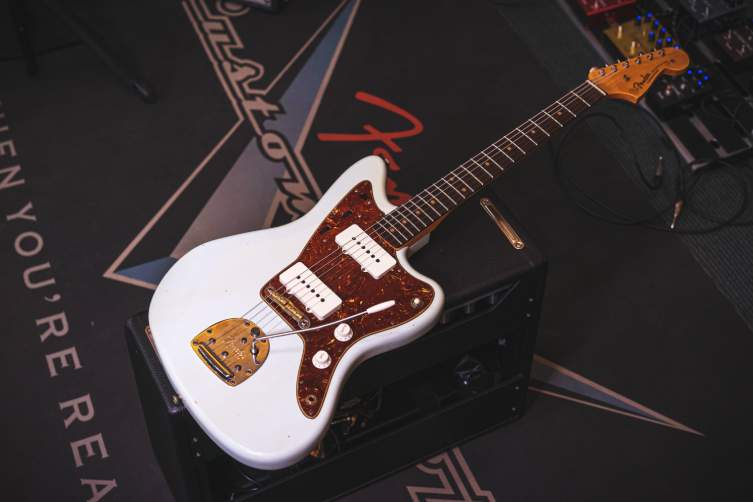
Debuting in 1958, the Jazzmaster was originally touted as a replacement for the Stratocaster. That obviously never transpired, nor did the world’s jazz-playing guitarists adopt the style, but the surf culture of the late 50s certainly did, and gave the Jazzmaster its first home.
In fact, the Jazzmaster proved to be far less popular than Fender first anticipated, and the model was quietly withdrawn in 1980, consigned to history and found only in the rack of pawn shops. Ironically, it was these same pawn shops that were raided by the likes of Sonic Youth and Dinosaur Jr, who scoured their cities for cheap, unwanted guitars that were still good quality and - importantly - not the guitars of the previous generation of rockers.
This is true of the Jaguar and the Mustang too, but the Jazzmaster seems to be more prevalent than the others, and here are the reasons why I think that might be the case…
- Factors like the 25.5” scale length feels ‘normal’ compared to smaller necks
- The wiring is unique (offering new sounds) but is not difficult to understand
- The Jazzmaster pickups (larger single coils, not P90s) offered a recognisably ‘Fender’ sound that was also larger than a Strat tone, making distorted and fuzzy sounds more muscular.
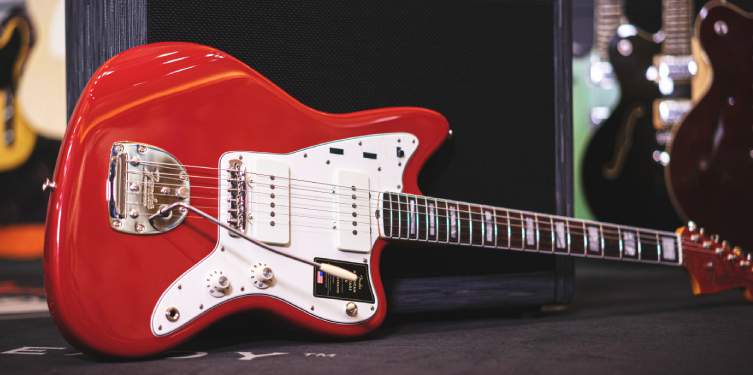
Those may have been the main motivators, though the fact that they were available and cheap cannot be discounted! The influence of those artists allowed the Jazzmaster to break through into the mainstream during Alternative Rock’s heyday of the 1990s. Since then, Indie bands, noisemongers and trendy mainstream artists alike have all worshipped at the font of the Jazzmaster, the ‘other, other’ Fender electric!
- 25’5” scale length
- Dual Circuit
- Unique jazzmaster single coil pickups
The Fender Jaguar
Next up, we have the idiosyncratic Fender Jaguar. Designed apparently to lure guitarists away from Gibson guitars (I have trouble accepting this story), the Jaguar first pounced on the guitar playing public in 1962. It was an upmarket variation on the Jazzmaster, with extra controls, more shiny metal and a shorter neck, which is the only concession to Gibson-style design that I can connect with.
Like the Jazzmaster, the Jaguar was eventually discontinued, though it too found favour with alternative rockers and came back to life in the 90s. Today, it occupies a similar place in Fender’s canon: below the Strat and Tele, but only just.
The Jaguar shares many features with the Jazzmaster, but these only go so far: indeed, even their body shapes are subtly different, and that’s before we get to the idea of the 24” scale length! This change is the most significant in terms of the Jaguar’s unique feel, but there are further changes. The dual-tone circuit, for example, is here too, but it’s pretty different to the Jazzmaster’s, both in sound and in operation. You also get the Jaguar’s famous ‘strangle switch’, which is a high pass filter that eats up all of the guitar’s (already relatively slight) lower end.
The bridge is the same (though sitting in a slightly nearer position on the body) and the pickups are regular Fender single coil pickups. All in all, the Jaguar is really quite a different beast from the Jazzmaster, and is a very distinctive sounding guitar in general.
- 24” scale length
- Dual Circuit
- On/off switches for each pickup (operation in one of the circuits, not both!)
- ‘Strangle switch’ high-pass filter switch
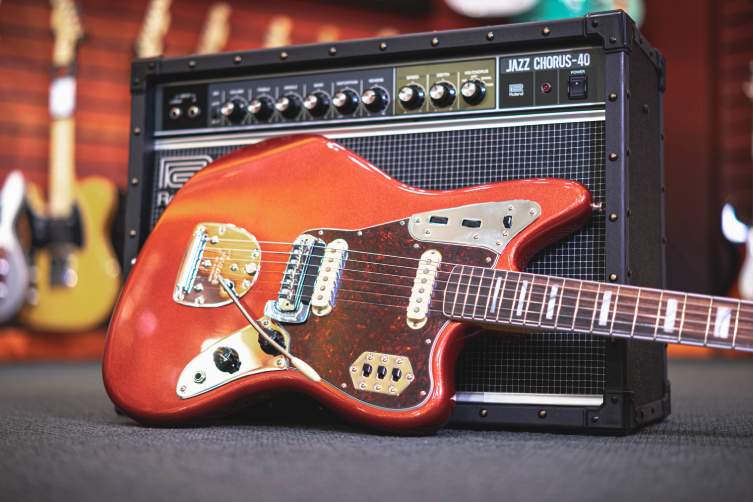
The Fender Mustang
Of the three guitars I’m chatting about today, the Fender Mustang is perhaps the odd one out. Despite it being a Fender offset from the golden era, it’s still looked at in a slightly different light. This may be because it was designed and marketed as a ‘student’ guitar, which from what I can tell really just means ‘cheaper’. There’s nothing to mark this out as less of an instrument apart from its simplicity, much in the same manner that a Les Paul Junior was a simpler ‘student’ version of the more expensive and flashy Les Paul Standard.
Anyway, the Mustang has a 24” scale length like the Jaguar, and an offset body that’s taken from the Duo-Sonic and the Musicmaster, two previous entry-level Fenders that were replaced by the Mustang.
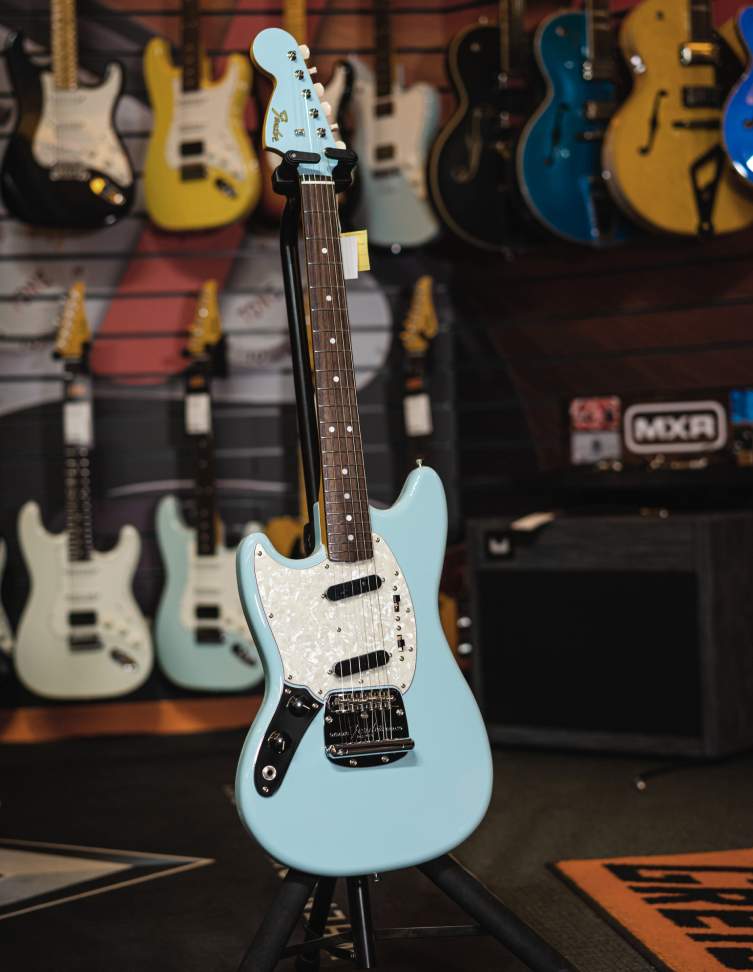
Two further features mark the Mustang out as a significant instrument, though not all of today’s reissues feature both.
The first is the pickup switching. Although the Mustang does not have a dual-circuit like the other offsets we’ve seen today, it does have unique switching. Instead of a pickup selector switch, you get an on/off slider for each pickup. This means you can have either on, or indeed both (or neither, but that’s counterproductive), and the circuit alters slightly to accommodate your choices. Very few guitars back then had this feature, and very few today do either!
The other feature is the Mustang’s bridge. Sadly, many of today’s reissue Mustangs have done away with the bridge in favour of more straightforward designs, but the floating ‘Dynamic vibrato’ on the Mustang is actually massively expressive and capable of quite extreme pitch bends! When I was lucky enough to talk to uber-producer Todd Rundgren, he told me that it was indeed a Fender Mustang he used to make those crazy motorcycle revving noises at the beginning of Meatloaf’s Bat out of Hell! There’s nothing else out there like it, and even Floyd Rose and Kahler tremolos (the only other styles that offer similarly extreme dives) behave and operate differently, so there’s some real appeal here for noisenicks!
- 24” scale length
- Individual on/off pickup switches
- Historical models have dynamic floating tremolo
Which Offset Model is the Best?
Ah now, that out chestnut! Which is best? Well, let’s see now…do you like short scale guitars? If you don’t, then it’s the Jazzmaster for an easy win, since it’s the only 25.5” scale guitar here.
If short scale isn’t an issue, then it’s more a matter of features and sounds. The Jazzmaster has a beefier sound than the other two, though it’s still recognisably ‘Fender’; the Jaguar is both the jangliest sounding and the most sonically variable, thanks to the advanced switching. The Mustang comes up somewhere in the middle, with a sound that’s characteristically ‘twangy’ but perhaps less distinct than the other two.
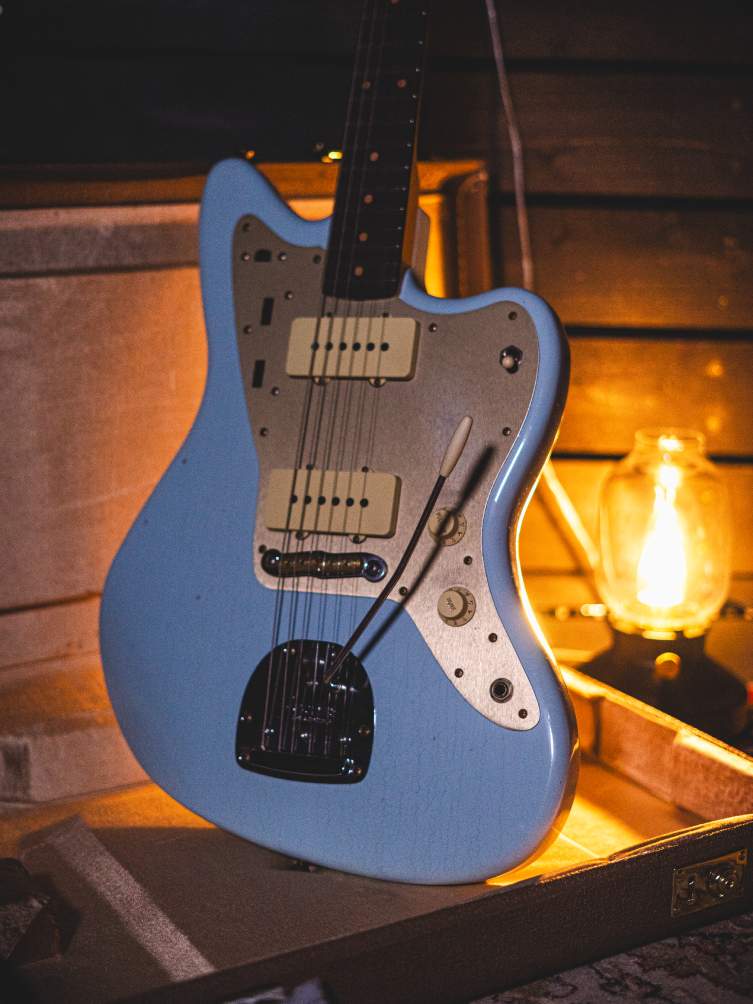
For versatility, I’d actually recommend the Jazzmaster. It has a sound that suits distortion better, perhaps, and the scale length makes it more familiar to a larger number of players.
There’s no doubting that there are ‘contrarian’ statements to be made with all three though, so these offsets are all still very much flavour of the moment for a certain sensibility.
The Jaguar is a lovely antidote to the Strats, Teles and Les Pauls of the world: it does things its own way and is a very inspiring instrument, if you accept that you probably won’t be playing shreddy leads on it!
The Mustang is a jack of all trades that will blend into any band’s mix, and has the added bonus of being associated with Kurt Cobain, so grunge fans will be on board straight away. For everyone else, it’s a matter of personal taste, but let’s just say that I understand perfectly well why so many people choose the Jazzmaster!





